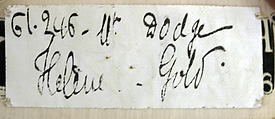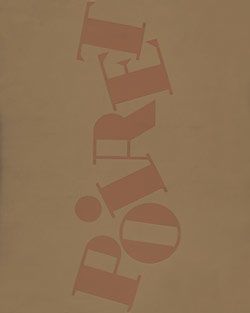Evening dress
Designer Paul Poiret French
Not on view
The casual execution of some of Poiret's designs suggests the couturier's prioritization of the impact of a dress over the less apparent refinements and details of finish characteristic of the work of other couture houses. This haphazard, even careless, cutting and stitching of a garment is one manifestation of the spontaneity inherent in the couturier's breathless production of a never-ending stream of ideas. Often, a Poiret gown discloses interior seam allowances that have not been overcast, or darts that have not been cut and pressed open but simply pinched and tacked, as if it has been rushed through the workrooms for an impatient client.
Poiret's designs from the mid-1920s, however, are invariably refined in their execution. Perhaps by that point in his career Poiret controlled his more theatrical and artisanal impulses and sought to conform to the standards of the métiers of les petits mains, the workshops that provide all the decorative details of the haute couture. Perhaps, also, he was answerable to his backers, the Auber Group, which from 1924, provided financial support to Poiret's flagging business. In any case, in this period his designs both reflected the polished finish typically associated with couture techniques and were also aligned overall with the styles of his contemporaries.
Although the designer continued to advocate a flaring skirt at a time when a stricter chemise shape was the standard, the fullness in this example is mediated by the weight of the embroidered pearl motifs – lotuslike with possible Egyptian Revival or archaic Chinese sources – which cause the paisley-patterned gold lace to collapse in irregular flutes. The lace, the "lotus" pearl embroidery, and the flaring Poiret sleeve (described by one journalist as a "mandarin sleeve," although it is equally Ottoman in style) are subsumed in the effect of prevailing fashion. Poiret's exoticism has not disappeared, but is merely muted by the influence of aesthetic trends that found full expression in the 1925 Exposition Internationale des Arts Décoratifs et Industriels Modernes.
This image cannot be enlarged, viewed at full screen, or downloaded.
This artwork is meant to be viewed from right to left. Scroll left to view more.








